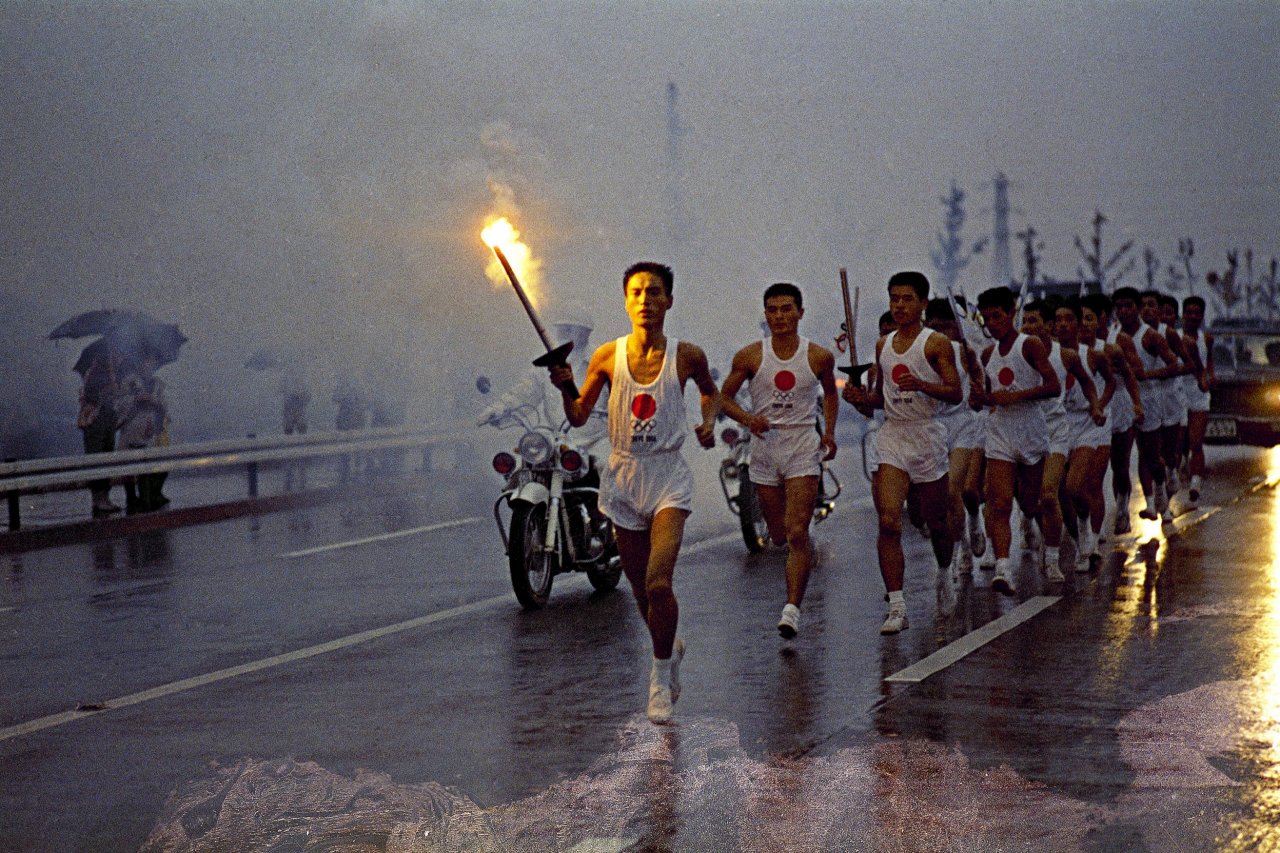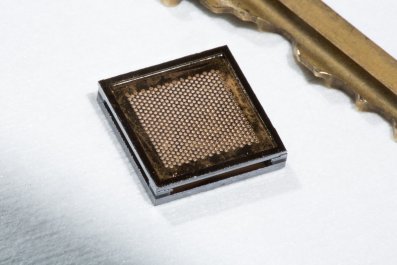If all goes according to plan, visitors to the 2020 Tokyo Olympic Games will be awestruck before the sporting contests even begin. Attendees will be shuttled around the city by self-driving taxis. They'll enter a newly built national stadium with the swipe of a pass, get verified by facial recognition software and be guided to their seats in one of 10 languages on a smartphone app. They may gaze up at the night sky from anywhere in Tokyo to see an artificial meteor shower show unfolding 50 miles above their heads.
Concerted efforts are under way to realize these and other innovations and emulate the enviable legacy of technological superiority and reputation rebuilding that emerged from the last Summer Games Japan hosted, in 1964. Olympic organizers, innovators, entrepreneurs and academics are working on ambitious projects that could enhance Japanese society and beyond long after the closing ceremony.
"The Olympic Games is a sports festival, but also it's a chance to show the innovation of scientific technologies," says Toshiro Muto, chief executive of Tokyo's organizing committee. He says the committee is planning high-tech features like hydrogen-powered vehicles for athlete transportation and smartphone tools to aid tourists. "We have the potential to make this Olympic Games wonderful [and one] that the people of the world are going to admire."
Cities are increasingly reluctant to host the Olympic Games, given their hefty price tags. London 2012 cost $12.64 billion; the 2014 Winter Games in Sochi, Russia, reportedly topped $51 billion. Governments typically justify such huge spending by arguing it's paid back through increased tourism, marketing and other activity. Studies show this usually isn't the case, but successful post-Olympic legacies are possible. Los Angeles had a rare surplus in 1984 ($232.5 million), Barcelona 1992 revitalized its waterfront, while London—heralded as the most digitally enabled games ever—laid down vital IT infrastructure.
Japan originally budgeted $3 billion for the 2020 games, but the organizing committee is currently reviewing the estimates; Japanese media report the total could be six times higher. Whatever the final figure, the country faces a big challenge matching the legacy of 1964. In preparation for the first games held in Asia, lavish public spending—paid for with World Bank loans—fueled an era of motorization that expanded car ownership and infrastructure, propelling Japan's economic rise. The growing use of color televisions at the time, and the introduction with NASA's help of the first international satellite feed, created a spectacle that improved the country's global standing two decades after World War II.
"The 1964 Olympics had a huge impact in the global imagination of what Japan could be and would be," says Christian Tagsold, a scholar of modern Japan at Germany's Heinrich Heine University in Düsseldorf, Germany.
Just 10 days before the start of the '64 Games, Japan launched the shinkansen bullet train service. Over the ensuing decades, the still-growing and remarkably punctual network has carried more than 10 billion passengers without an accident and been replicated globally. "It was the fastest train in the world and demonstrated Japan's re-emergence as a technological leader," says Paul Droubie, a historian of modern Japan at Manhattan College in New York.
As the country now sets about replicating this success, it faces changed circumstances: The economy is no longer vibrant and is saddled with the highest debt burden in the industrialized world, and Japan's population has aged more than anywhere on the planet, causing the workforce to shrink. Analysts argue the Japanese government's once lofty ambitions have diminished considerably. "Unlike in 1964, I think there's a lack of grand vision," Droubie says.
Japanese Prime Minister Shinzo Abe is trying to counter this view. At the annual Science and Technology in Society Forum last October, he envisaged a Japan where innovations "spring up one after another." Noting that its carmakers have built momentum in developing driverless technology, Abe made a bold prediction: By 2020, self-driving cars will be crisscrossing the streets of Tokyo.
Abe's best hope of avoiding embarrassment may rest with Robot Taxi. The company, a collaboration between mobile and online services firm DeNA and robotics company ZMP, is refitting existing vehicles with self-driving technology. (Its bet is that this will be more efficient than building new ones from the ground up.) Robot Taxi is customizing the Toyota Estima—a minivan branded as the Previa in the U.S.—but its method could be used on other models and manufacturers, according to a spokesperson. Later this month, Robot Taxi will hold 12 days of field tests involving local residents in the Kanagawa prefecture, near Tokyo.
Hiroshi Nakajima, head of automotive business at DeNA, says the government has committed to passing laws regulating self-driving taxis by 2017, and the company hopes to have several thousand cars on the road for the Olympics. But the final number will depend on the stringency of the regulations, such as what roads the vehicles are allowed on, he adds. Japanese automakers, such as Toyota and Nissan, are also working on rolling out cars capable of some autonomous driving by 2020, but Nakajima believes his taxis can be early trailblazers by being fully self-driving and service-oriented.
The company sees the Olympics as an ideal launchpad given its managed nature, geographic spread and tourist appeal. But the Robot Taxi service could eventually be applied to various industries, from logistics to health care, and as the areas where the taxis are permitted expands, it could help solve problems endemic to Japan, such as rising rural isolation and high car accident rates among the elderly, who may not be able to afford a new autonomous car.
The Robot Taxi project is one of many Japanese innovations planned for debut around the games. "Many large companies think the 2020 Olympics are a good deadline for their cutting-edge research and development products," says Tomoaki Wada, chief executive director of the Kobe Science Museum and a veteran of Japan's Ministry of Education, Culture, Sports, Science and Technology. They don't come much larger than Panasonic, an official Olympic sponsor that is developing a variety of products geared for the occasion, ranging from automatic translation devices to an electric bicycle-sharing scheme and micro-mist cooling stations.
"We hope these innovations of hospitality from arrival to departure will become important legacies not only for visitors in 2020 but for the Japanese people as well," says a robotic voice on a promotional video on display at a company showroom.
Panasonic is also developing a "total surveillance system" that can integrate tens of thousands of fixed and mobile cameras and restricted-area sensors into a network to secure the harbor front, home to the Olympic Village and many event venues, and elsewhere. The 9-megapixel, 360-degree fish-eye lenses affixed to the cameras will be combined with image-processing software and built-in directional microphones that can "accurately recognize voices and sound in [a] specified area," says Shigeo Furukawa, a product demonstrator.
Makoto Mihara, a Panasonic spokesman, says the network would be effective in detecting and preventing terrorist attacks, and will abide by any legislation and regulations to heed privacy concerns. He maintains it will have broad positive uses. "When accidents or disasters occur, we could find a fallen person in the crowd and detect certain voices," Makoto adds. "If [it's] a foreigner who does not understand Japanese, we can listen [to] what he is asking."
The company also plans to partner with organizers to offer the "wonder Japan pass," a credit card-style gadget to make visitors' experience "smarter and simpler," says Furukawa. The identity, access and payment pass would utilize facial recognition technology to verify users and safeguard against fraud. If Panasonic can get other key companies—and the Japanese government—on board, it could be an all-in-one device, serving as an ID, opening venue gates or hotel room doors and paying for everything from (self-driving?) taxis to shopping.
For years now, the games have been as much about pomp as sport. In 1976, Montreal re-lit the Olympic torch by laser beam, activated using a radio signal sent by satellite from Athens to Canada. At the opening ceremony in California eight years later, a man with a jet pack strapped to his back spectacularly flew into the Los Angeles Memorial Coliseum. Meanwhile, in Barcelona in 1992, a paralympic archer lit the Olympic cauldron with a flaming arrow shot across the arena.
A startup firm hoping for a role in the 2020 ceremony, as well as a long-term legacy in scientific innovation, wants to trump them all. ALE, an "outer space entertainment" company, is working on producing artificial meteor showers on demand. Its creators believe the technology could gradually lead to the wholesale replacement of fireworks for large-scale entertainment, while also making valuable contributions to the study of meteors and the upper atmosphere, as well as space technologies like de-orbiting (bringing a satellite back down to Earth).
The team aims to launch microsatellites 50 miles above Earth that will eject small pellets that then glow brightly as they descend into the atmosphere and burn up from friction with air. Chief Executive Lena Okajima, a former Goldman Sachs entrepreneur with a doctorate in astronomy, estimates they will be visible from a ground area of 200 miles, encompassing 30 million people.
ALE is collaborating with several Japanese academics, including Shinsuke Abe of Nihon University's aerospace engineering department. Abe has been testing how to increase the artificial meteoroids' brightness by altering their size, shape and structure, given the relatively slow re-entry conditions (around five miles a second), compared with naturally occurring meteors (up to 50 miles a second). At the Japan Aerospace Exploration Agency, the team uses an arc-jet wind tunnel—a 13- by 33-foot device containing a vacuum chamber in which the test pellets are set in place and blasted with supersonic streams of hot gas to mirror some of the conditions they'll face in flight. "So far, we've succeeded to produce a special bullet that is almost 70 times brighter than meteorite samples under the same aerodynamic-heating conditions," Abe says.
The academic team believes the venture has high scientific value. "Our artificial meteor will be used for not only entertainment but also [as] a dominant tool to make a continuous observation of the upper atmosphere," says Hironori Sahara, an aerospace engineer on the project. Their work is already helping to better the understanding of the physics and chemistry of natural meteors, as well as their orbit patterns and key information about atmospheric re-entry, says Abe.
ALE plans to stage launches in Tokyo by 2018 and look for sponsors—big companies as well as wealthy enthusiasts—to help cover the expense of testing and other launches. A single launch costs close to $9 million, Okajima estimates, with the rocket carrying the satellite the most expensive element. Despite the price tag, Nobuhiko Otsuki, ALE's chief marketing officer (and the idea's originator) fully expects the microsatellite system to become the fireworks of the future and wants to disperse colors even farther afield, "like using the sky as a canvas." He adds, "In the next 100 years, people will love this."
Reporting for this story was supported by a International Center for Journalists program, with funding from the United States-Japan Foundation.




















